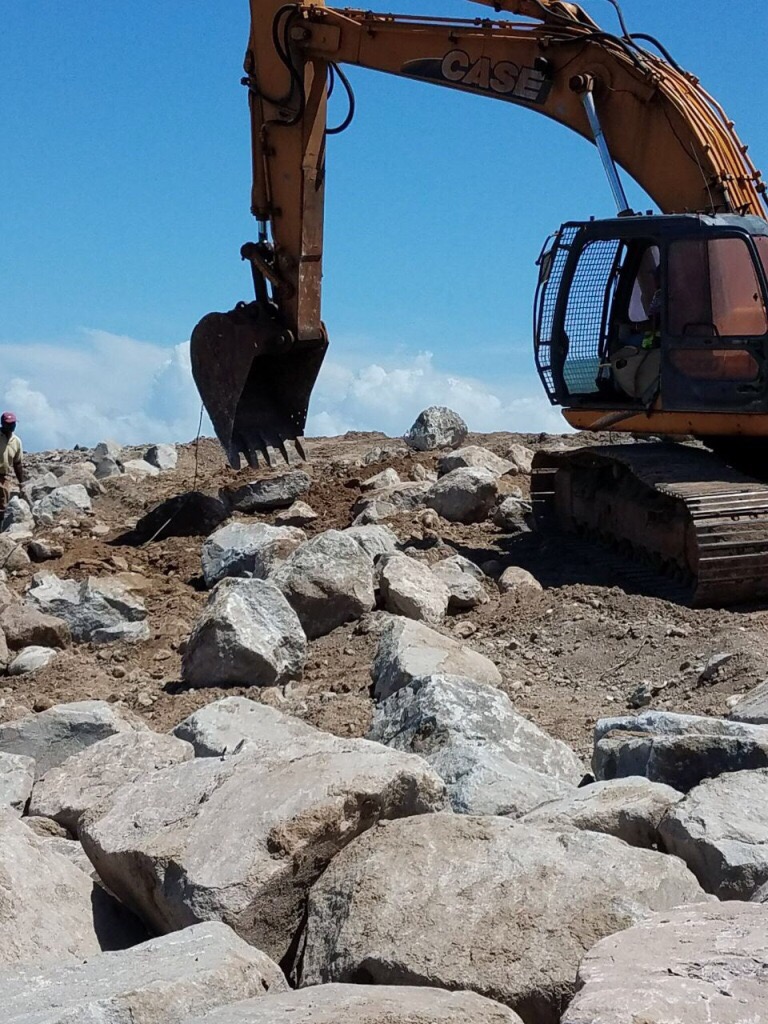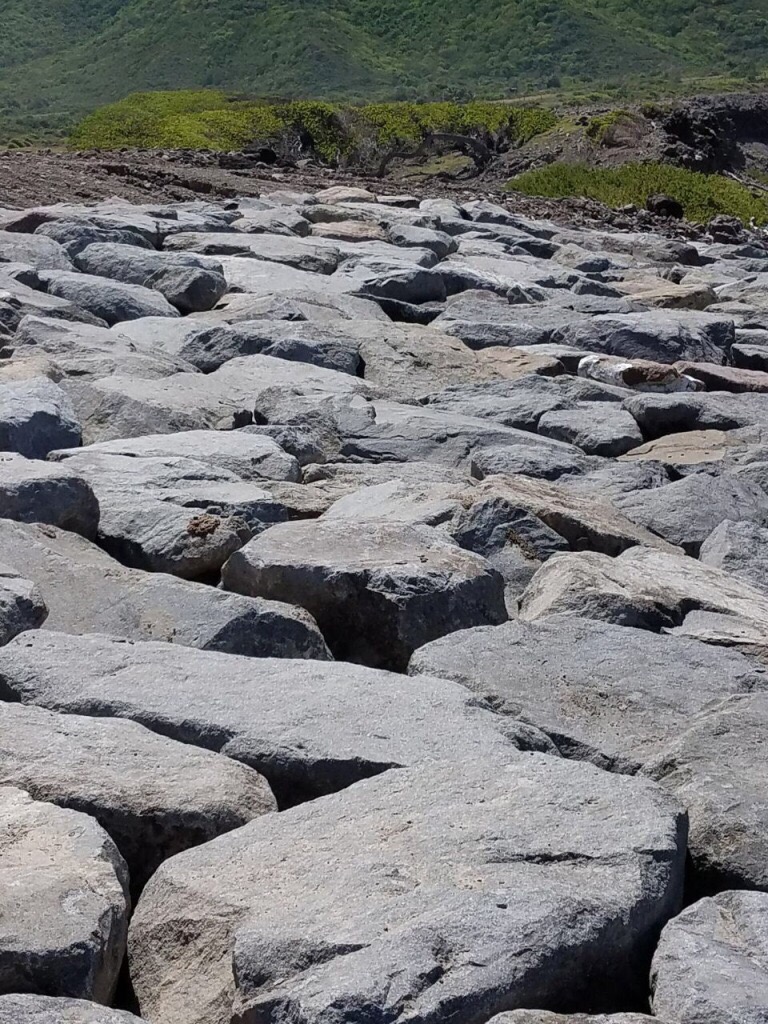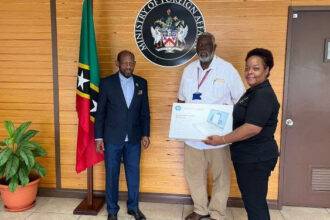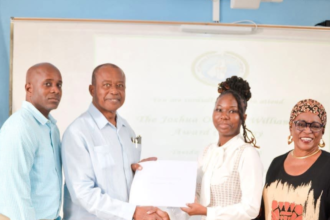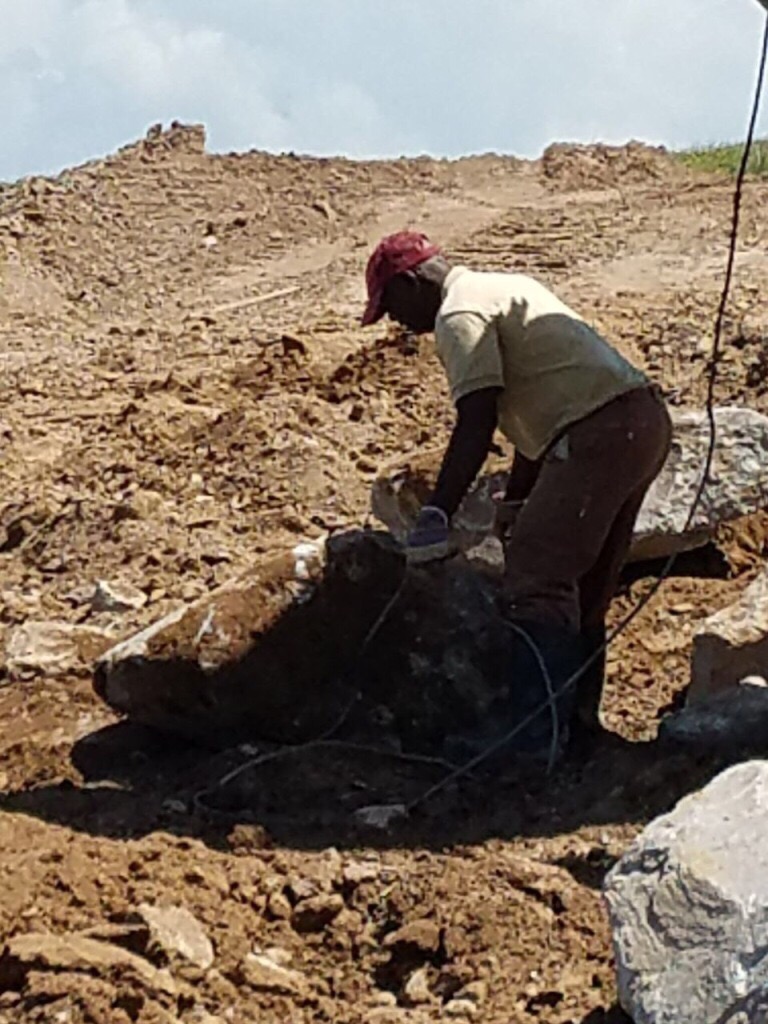
Photo 1- A workman tying amour boulders
Charlestown, Nevis (13th June 2017): The New River & Coconut Walk Estate’s Slope Stabilization and Erosion Control Project in Nevis is on track to provide important benefits to stakeholder groups on the island.
Several natural and human activities such as sea level rise, illegal sand mining and overgrazing have caused sections of the coastal slopes in the area to be severely eroded. The project seeks to stabilize the slope and control erosion by implementing structural mitigation measures including the placement of a 65 meter long rip-rap and bio-engineering works to re-vegetate the area.
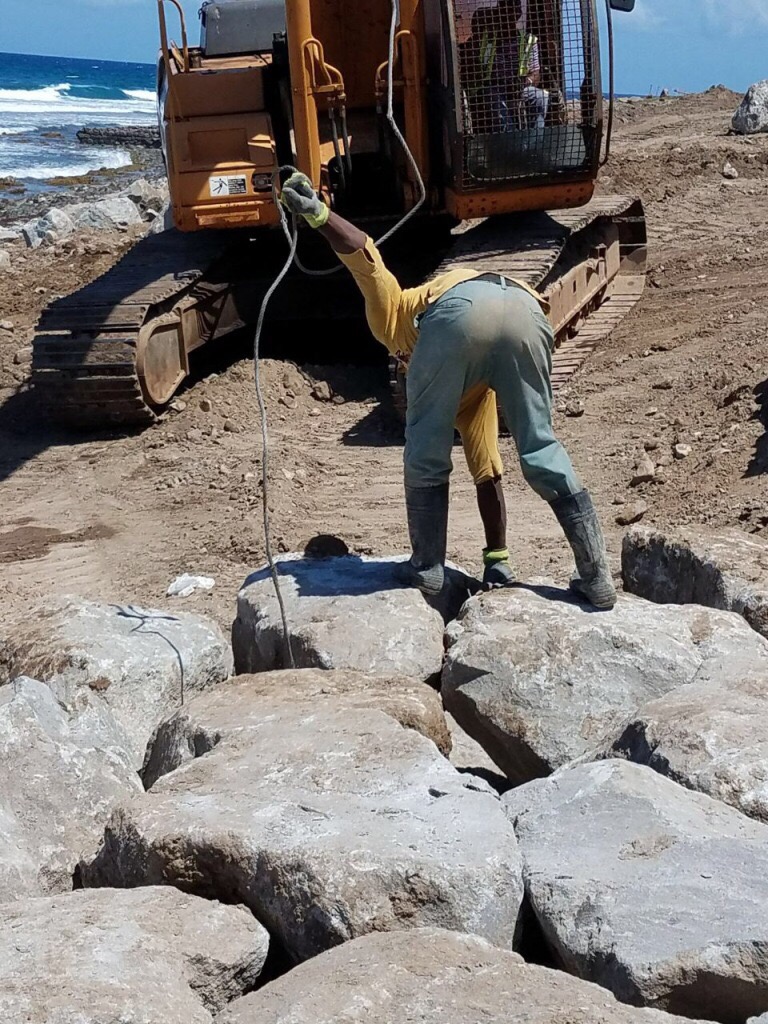
Photo 2- Worker inspects boulder placement
According to Mr. Floyd Liburd, Forestry Officer in the Ministry of Agriculture in Nevis and Focal Point for the physical adaptation pilot project, stakeholders such as farmers who live and work in the area will reap tremendous benefits from the measures that are being put in place to protect the coast and adjacent historic buildings such as the Lime Kiln ruin at New River Estate.
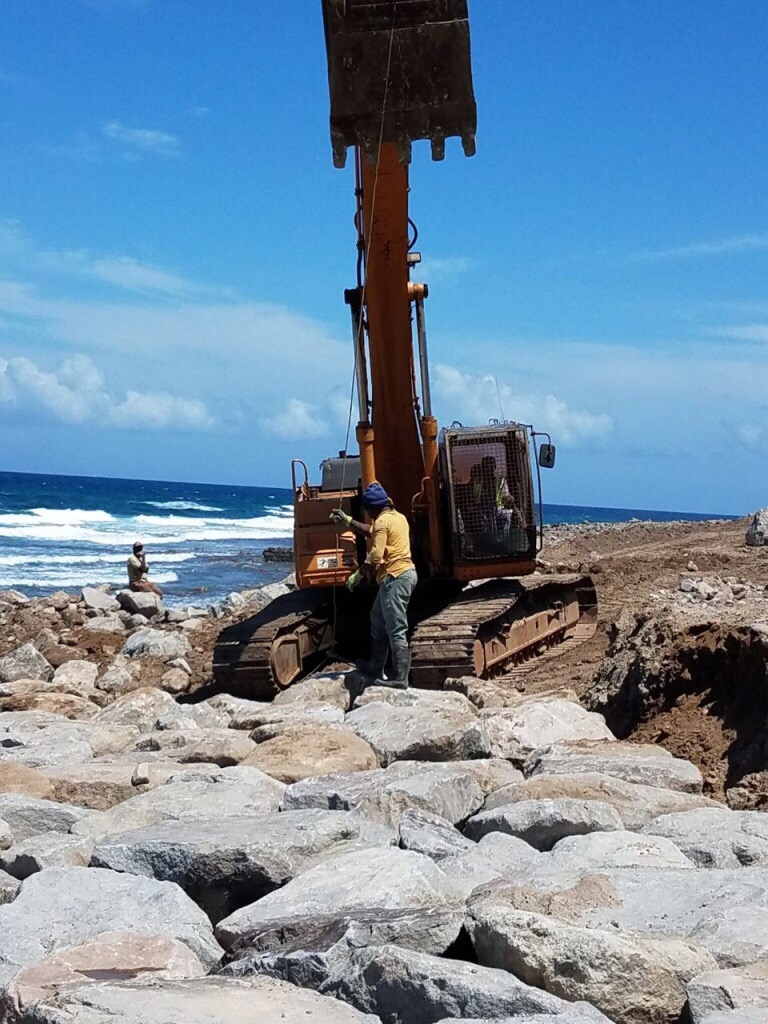
Photo 3- Boulder placement underway
“Everyone in the area will benefit. Farmers in the area will benefit. Tourists will also benefit because the area can become a tourist attraction. There is a lime kiln in the area already and this would just add to the value of that attraction,” said Liburd. “Farmers would benefit because the plants that would be placed along the coast would intercept some of the salt spray that were affecting melons and tomatoes and so on in that area. And so farmers and the general public stand to gain from this project.”
Photo 4- Excavator moving boulders for rip-rap
The local contractor for the Project is Lefco Equipment Rental and Construction Company Ltd.
The physical adaptation pilot project at New River is a sub-component of a broader regional project (termed as the iLand Resilience Project) which is a collaboration between the Global Climate Change Alliance (GCCA), the European Union and the OECS Commission. The overall project goal seeks to build awareness of global climate change as well as to build the capacity of Member States to address the effects of climate change.
Three other key national outputs of the iLand Resilience Project includes: the development of a National Climate Change Adaptation Strategy for St. Kitts and Nevis, the development of “best practices” recommendations for the implementation of the Revised OECS Building Codes, in addition to implementation of public awareness and project visibility activities.
Photo 5- Section of rip-rap revetment
The Department of Environment as the National Focal Agency for the iLand Resilience Project is pleased with the progress of the project and in particular the progress that is been made under the New River Slope Stabilization and Erosion Control project in Nevis.
-END-




